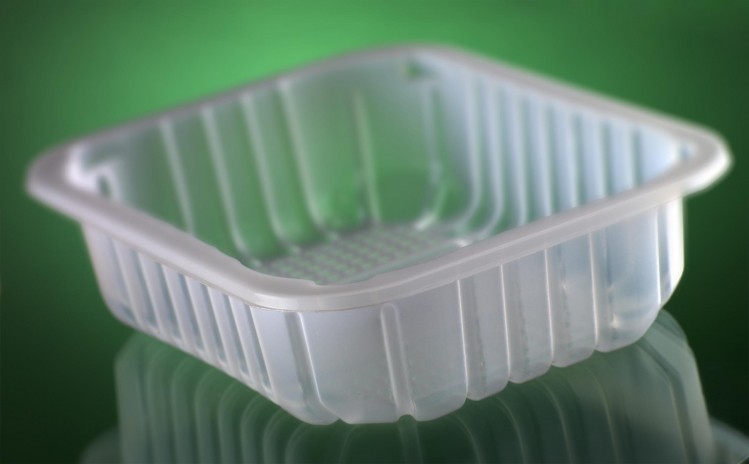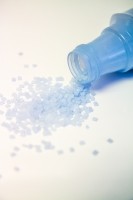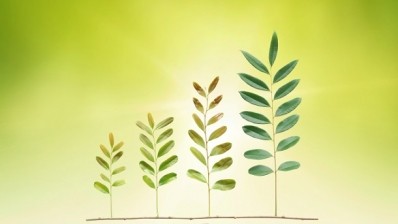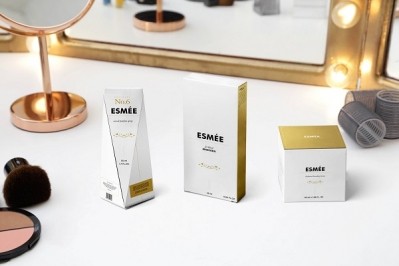Floreon reveals plans for bioplastic market

Floreon is a specially formulated compound added to standard PLA to make it tougher.
Shaun Chatterton, CEO and company founder of Floreon Transforming Packaging, told us it has been in contact with a cosmetics company and is currently running trails with them.
The bioplastic technology firm had a patent granted in the UK, New Zealand and Australia at the start of the year. Applications are pending in USA, China and Europe.
Bioplastic opportunities
Chatterton said food and beverage packaging is also an exciting opportunity for the bioplastic.
“It is four times stronger than PLA so it can replace existing plastics, it is the silver bullet. Without modifications PLA is not durable enough and be brittle,” he told FoodProductionDaily.
“The food packaging industry has trialed it in a number of applications, it performs for thermoforming trays and it can be run on standard processes.
“A big challenge is commercialisation, the talk is everyone wants to change to a sustainable material but PLA will continue to be more expensive until volumes come up to standard levels.
“Changing to a sustainable material in a challenging economy, some can’t run the risk of paying more, but the gap is narrowing.”
There are six grades with each optimised for different applications and processes. For example, Floreon 300 for extrusion blow moulding and Floreon 600 for thermoforming.
The bioplastic came out of four years and two Knowledge Transfer Partnerships (KTP) with Sheffield University.
The firm said testing by Smithers Rapra showed injection molded samples were almost twice as tough as PET (notched Izod test).
It added other plastics typically need temperatures of 280-300 degrees centigrade during manufacturing compared to 160 degrees centigrade required by Floreon.
End of life and PLA future
PLA is currently produced from annually renewable crops such as corn, tapioca roots, starch or sugarcane.
Future feedstock options for lactic acid production will potentially include carbon dioxide or methane.
At end of life Floreon can be recycled, disposed of by industrial composting or used for energy or feedstock recovery.
Chatterton said it wants to remain the manufacturer but would be open to licencing the technology.
“PLA is a good material but it needs improving. It is gaining traction with additives and systems of how it is produced. Bioplastics have been slow in community uptake, about 20-30% per year but from a small base so it is still small numbers.
“Research on second generation PLA will improve barrier properties and thermal properties. Floreon could be used as a drop in solution or as an additive added to existing materials.”
Other bioplastic news
In other developments, a four year EU research project called Sustainable Polymers from Algae Sugars and Hydrocarbons (SPLASH) is developing a platform for the third generation algae feedstock into bioplastics.
Led by Wageningen UR Food & Biobased Research, it will end next year.
Plantics BV, a spin-off company of the University of Amsterdam, is developing and marketing a plant-based bioplastic invented at the university by Prof Gadi Rothenberg and Dr Albert Alberts.
Helias Andrisessen, managing director, told us it is looking at the packaging industry to find its first market since the bioplastic is biodegradable and made from renewable resources.
NEC Corporation has developed a production technique to produce a high-functionality bioplastic using one-tenth the energy (fewer CO2 emissions) than previously required.
It claims the method can synthesize bioplastic using the non-edible plant resource cellulose as its main component.
The firm aims to use this technology to start mass production of a cellulose-based high-functionality bioplastic during fiscal 2016 in electronic devices and other durable products.
A project between Ferrero (Italy), Stora Enso Barcelona (Spain) and Papiertechnische Stiftung (Germany) has been looking at improving the production chain for confectionary goods by using waste within the packaging of the goods.
Confectionary waste, such as hazelnut shells and cocoa bean skins, from production is pre-treated by a dry-milling process and added to the middle layer of a triplex folding box board where it acts as a partial replacement for virgin cellulosic fibres.
Ecopaper runs until July this year and expects to produce board with 20% of hazelnut shells in the middle layer ahead of further convertibility tests.















